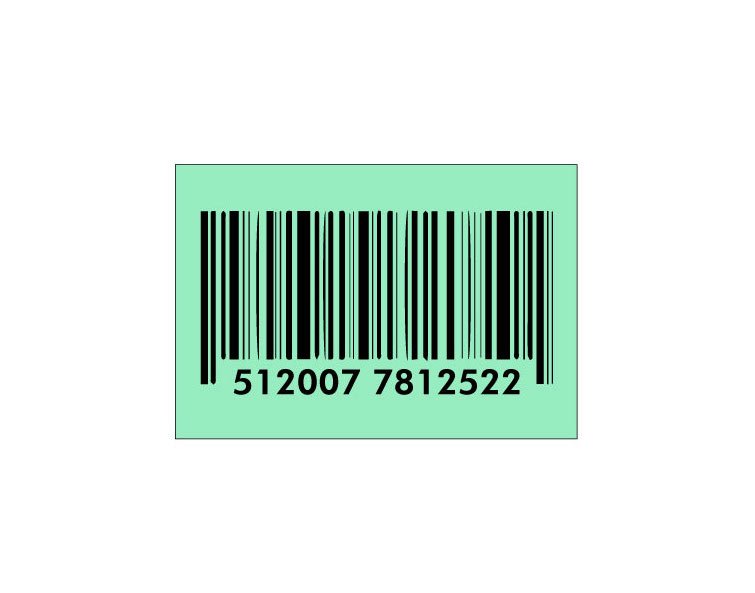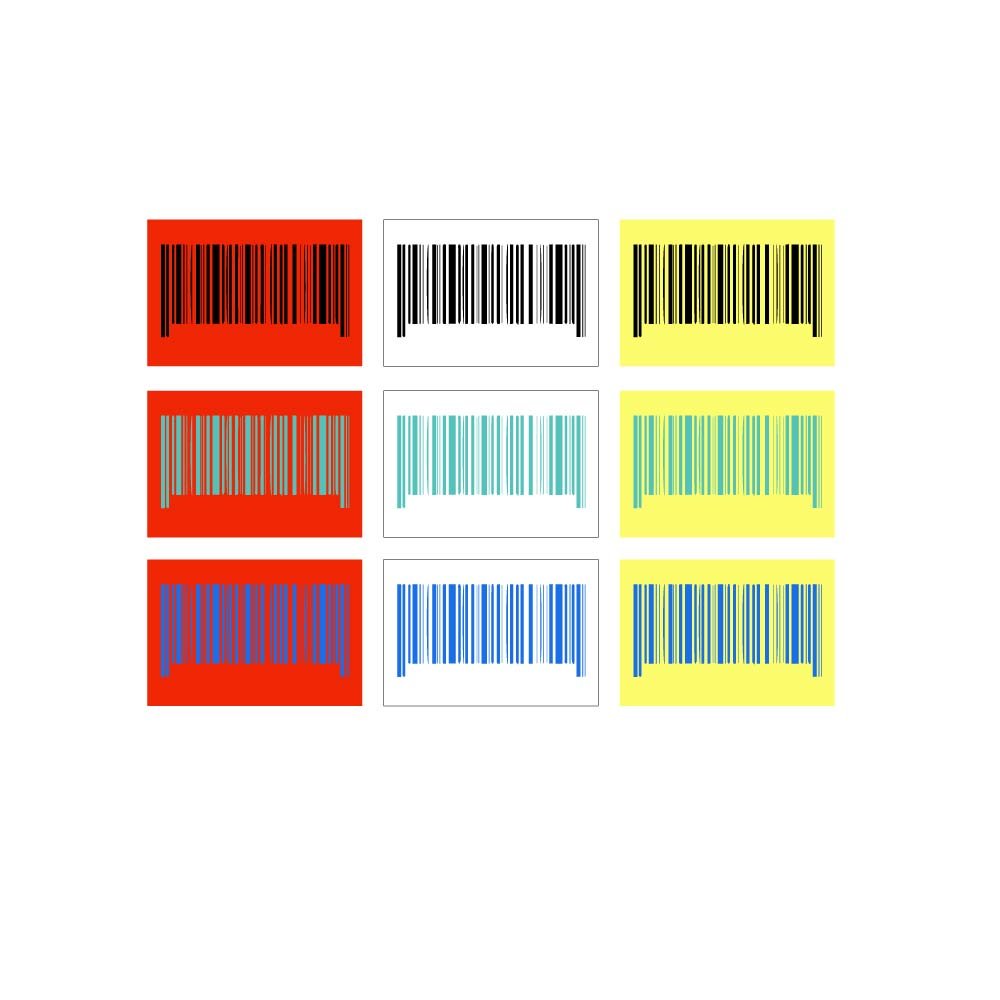If you haven’t been living under a rock, you must have visited a 7/11 or any general store. On almost every packed product, you can see a series of black bars of varying breadth on a white background. This is the barcode. But why is it always black bars on a white background? Can a barcode be white? Or can it be of different colors, any color we want? There is a lot that goes behind that zebra-pattern on the products. This article will dive into some topics such as chromatic barcode, can a barcode be white, and what happens when a scanner scans a barcode.
To understand whether a barcode can be white or any other color, it is imperative to understand how a barcode works. It turns out that barcodes are like letters with bar sequences denoting a number from 0 to 9. You can learn to read a barcode without a scanner. But it’ll take a lot of time and you are better off with a scanner. Let’s get into it.
What’s a Barcode and How to read it?
Everything that you see on the computer is in the form of 0s and 1s. This is the language of computers and this is what computer memory is made of. So to make the computer read and store information on a product, we had to interpret this data into something scannable. This is what the barcode does. A barcode is a series of bars on white space that represent a binary code.

Barcodes vary in length as well. Some are long while some are short. It all depends on the numbers. A barcode containing a 16-digit number will be longer than one that has a 10-digit number. This is what each bar in a barcode means.
The characters of a barcode
Can a barcode be white can be understood in this section? The black bars on a white space aren’t arbitrary. Each bar and its position mean a digit from 0 to one. There is an illustration to aid the explanation. Here is what barcodes mean in simple language.
Every digit in a barcode has the same amount of horizontal space for it; 7 units of space. Let’s call this 7-unit space a box. Each box represents one digit. So a barcode showing 10 digits will have 10 boxes. These boxes filled with a combination of black bars and white spaces. Each unique combination represents a number. For example, number 1 is represented as white, white, black, black, white, white, black. Or in short form, W-W-B-B-W-W-B. Whenever a scanner sees a box, it looked for a pattern. If it sees the pattern mentioned above, it registers it as 1.
Here is a list of all the other digits in barcode language.
- 0 – WWWBBWB 4 3
- 1 – WWBBWWB 4 3
- 2 – WWBWWBB 4 3
- 3 – WBBBBWB 2 4
- 4 – WBWWWBB 4 3
- 5 – WBBWWWB 4 3
- 6 – WBWBBBB 2 4
- 7 – WBBBWBB 2 4
- 8 – WBBWBBB 2 4
- 9 – WWWBWBB 4 3
A string of digits such as 234 would look like this – WWBWWBBWBBBBWBWBWWWBB. Clearly you’d prefer to have it read as 234 instead of the mess of Ws and Bs. But that isn’t the case with a computer.

Why don’t scanners scan the numbers?
Another question, other than “can a barcode be white?”, that may have popped in your head is why not just print the numbers and scan it? But there is an issue with that. Scanners are very poor at scanning characters. The scanner scans a barcode and sees white spaces and black bars. This is easier to see for the device.
Scanning numbers with complex shapes and confusing similarity creates an issue. 8 and 3 resemble each other. One small printing error and the numbers would become unreadable. This is why it is much easier to read black bars instead of numbers. And this reason also answers the question of can a barcode be white.
How the scanner works
There are many types of scanner for barcode scanning, the most common being laser and CCD scanners. But all the scanners work on a similar premise; Reading the language of the barcode. The reason why the bars are black on a white background and not the other way around is to make the scan easy and accurate.
When the laser scanner shoots the laser, the black bars absorb some light while the white lights reflect most of it. The reflected light goes back to the scanner which also has a detector. The areas reflecting most light are read as white and areas reflecting the least light are read as black. This code is then computed and the information is stored. But did you notice something here? The answer to the question is here. Let me elaborate.
Articles you may like:
- How does Wattbike works?
- How to make gun symbols only using the text symbols on your keyboard
- The conversion of Megabits to bytes and more…
Can a barcode be white?
Can a barcode be white? It already is. There are no black bars without white spaces. It all depends on the way you look at it. On average, the number of white bars in a box is 3.2 while the number of black bars appears in a box is 3.3. So they are almost equal. The number of black bars and white bars on average is almost the same.
This means that a barcode is black bars on a white background and white bars on black background. It is the same, no matter how you look at it. Since the scanner reads both colors (the presence of colors and absence of it), the answer to can a barcode be white is yes, it already is. But what about other colors?
Barcodes with different colors.
So the barcode is equally black and white, but can it be blue and green? Or red and blue? Or any other color we want? It can be of different colors, but there are some exceptions. While you can have a barcode with other color combinations, they have to be contrasting colors.

Laser scanners and other scanners need light to reflect and absorb to read the barcode. If the background of the barcode absorbs the light like the bars, there will be no code to read. The same is true for the inverse situation. This is why contrasting colors are used. Here is a graph to make it easier to understand.
Another thing to note is red and yellow are reflective colors for a laser scanner. So red and yellow as the background of a barcode works well, but as the color of the bars, they are terrible and will consider the scanner. Black and blue are the best colors to be used for bars as they absorb light very well.

There are some other, minor reasons for not using colors. First, black and white are the most contrasting colors pair one can get. This ensures the top accuracy of the scan. And when we are talking about scanning products within a fraction of a second, accuracy is very important.
The second reason is the price. Using multiple colors adds to the cost of printing. For one barcode, the price isn’t that much. But no one prints just one barcode. Packaging and printing require money and color adds to the cost. Let’s say adding one colored barcode costs around 5 cents. Printing these on, let’s say, a hundred thousand jam bottles would increase the cost by $5,000. This is a totally unnecessary cost that does not add to the efficiency, but only aesthetics.
Light Margin or quiet zones
The scanner must know where the barcode starts from. To tell this, there is something called quiet zones. The is the blank space on the right and left side of the barcode that initiates the reading and conclusion of the code. The color of the quiet zones is also important.
What matters is the color of the quiet zone must appear black under red light. White is always a great option but there are some other colors as well. Blue and green work well. But again, no one pays that much attention to the barcode color and everyone goes for the uniform black and white color combination. White bars on a black background will not work.
